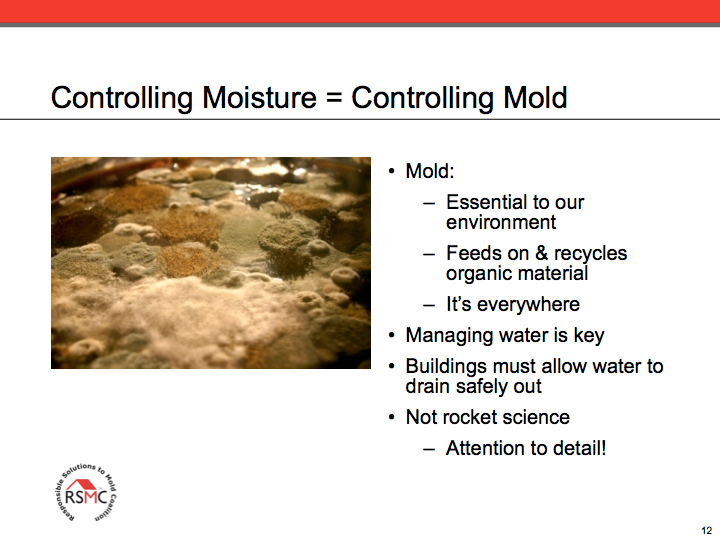Molds can grow on virtually anything around the house — from wood, carpet and food to insulation systems in your walls. Follow these guidelines to help rid your home of nasty mold and mildew.
Mold is more common today because the focus on improving energy efficiency has resulted in more airtight homes that don’t breathe as well as older structures. More complex home designs have also increased the potential for moisture intrusion, according to the Responsible Solutions to Mold Coalition.

Homeowners have become increasingly concerned about the indoor air quality of their homes as Americans spend around 90 percent of their time indoors, according to the National Center for Healthy Housing. The Asthma and Allergy Foundation says that one out of four people are affected by asthma and allergies, and the main agents are dust, mold, and mildew.
3 Mold Myths and Realities
Myth #1: Mold grows only on paper, wood, and other organic material
Mold will grow on any surface. Even flat and smooth surfaces like glass, fiberglass, and steel are mold-susceptible. If there are mold spores in the air, moisture, and a particular organic matter like dust, mold can grow. The only effective strategy to control mold is to control moisture. It is important to fix leaks, grade land away from a building structure, and increase ventilation by installing fans in bathrooms and kitchens. You can also decrease the relative humidity below 60% by installing dehumidifiers in basements.
Mold can grow on inorganic materials that have organic dust on them. For example, in a shower mold does not actually grow on the inorganic tile, but instead grows on the dead skin cells , soap scum and dirt left behind on the tiles.
Myth #2: Water intrusion is inevitable
Homeowners can prevent water intrusion by staying o top of any leaks around the house, especially in bathroom faucets, showers and toilets. Building experts urge homeowners to stay alert for signs of mold, including dampness, odors, discoloration, peeling paint, condensation, compacted insulation and actual mold outbreaks. New York’s Department of Health says to be on the lookout for slightly furry, discolored, or slimy patches that grow over a period of time.
If you suspect mold but do not see it, a limited mold inspection can sometimes confirm those suspicions through air sampling sent to a qualified laboratory. A limited mold inspection should also include a visual inspection of the home.
Myth #3: Mold is the only problem associated with water and mildew intrusion
Water and mildew intrusion is like opening a “can of worms”. Mold, insects, and other pests love damp environments. Dampness can also severely damage essential building materials, such as your home’s foundation, so make sure you find where the water and mildew are entering and find measures to prevent it.